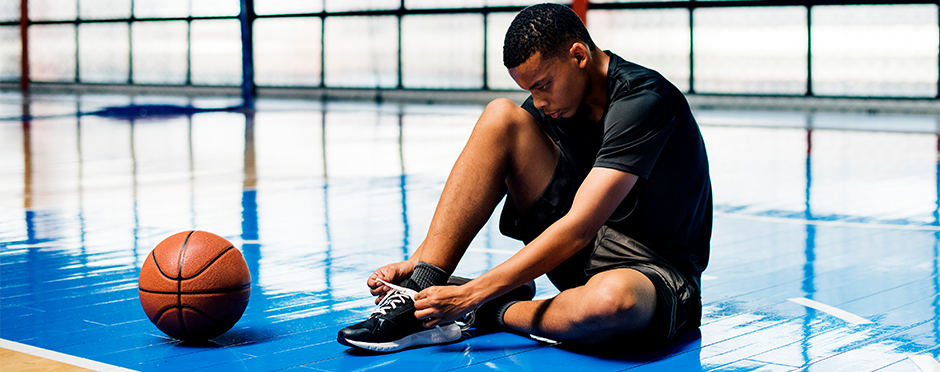
Return to Sports Stronger: Tips from a Physical Therapist
Leave a Comment2020 has been a difficult and disappointing year for many high school athletes. Beginning with the cancellation of winter and spring seasons and now with fall/winter sports again in jeopardy, many athletes have missed a significant portion of their high school career. While there is nothing to replace the feeling of playing in games, there are many ways to stay active, remain competitive, and continue training for your sport. Here are some ideas from a physical therapist on how to stay in optimal shape in preparation for the return of athletics.
Zone In On Your Workouts
Take steps to refine your work-out routine. Oftentimes, a high school sport is a six to seven-day commitment out of the week between daily practices and weekly games. This can make it challenging on the body for several reasons. When you focus on one sport for that amount of time, you are constantly engaging the same muscles. Additionally, because of the time demands of your sport, there is most likely not as much time spent in the weight room, stretching or addressing other areas of the body. With some sports currently not in session, time can be spent refining your work-out routine. Have you ever questioned why you are doing certain lifts, stretches, or drills? If so, you can use this time to figure out which muscles in your body are tight, which muscles need strength, and what actions are important for your sport so that you can come up with a specific plan to stay in great shape.
Address Areas of Concern
Think about last season. Were there times you felt overworked? Were there times late in games where you felt too fatigued? Did you have any pain over the season? These are all great questions to review and ask yourself. For example, if you are a basketball player, and you notice that during the second month of last year, you began to have knee pain, this may be a good time to do some research or see a physical therapist to seek a possible answer. Though you may not be in pain now and the pain may not have necessarily limited your performance, preventative training can be performed to limit the possibility that this happens again. Recently, I treated a cross country athlete with foot pain. Her pain was not unbearable, and she could still perform her sport, but the pain was a constant annoyance that probably impacted her running times during the season. Through testing and muscular screening, it was determined that while she is having pain in the bottom of her feet, the root of the problem was coming from weakness in her hip muscles. After changing her exercise routine and performing more hip strengthening, she began to feel much better and she was able to return to running with no foot pain.
Focus on Nutrition
Another important area for success in sport is nutrition. One example of this playing a crucial role with athletes is with the female athlete triad. This is a medical condition defined by the American College of Obstetricians and Gynecologists1 as 1) low energy availability with or without disordered eating 2) menstrual dysfunction and 3) low bone density. Athletes at the greatest risk are dancers, gymnasts and runners where low body weight is desired, but all athletes are at risk, regardless of body build or sport.1 This can lead to injury during sport and unfortunately, other health issues later in life. Seeking treatment to assist with nutrition and diet is an important step for athletes to avoid injuries and health issues. Aside from medical conditions, eating the proper meals at the optimal times may supplement your training in the weight room or on the track by helping you increase lean muscle mass and muscular strength. In order to maximize performance on the field, athletes can take time to research or talk with medical professionals about the proper diet for their sport during this time.
Though it is disappointing to not have a ‘normal’ high school sports season, hopefully some of this advice can be taken for you to prepare for your sport when it does return.
If you’re experiencing a nagging pain or injury or curious about designing an exercise program catered to you, request a free assessment. Our team can evaluate your condition and recommend the best treatment option for you. Free assessments are available in-clinic and virtually through our telehealth service. Hope to see you on the field soon!
Physical therapy is usually the thing you are told to do after medication, x-rays or surgery. The best way to fix your pain is to start where you normally finish – with physical therapy at Athletico. Schedule a free assessment in-clinic or virtually through a secure online video chat where our team can assess your pain and provide recommended treatment options.
The Athletico blog is an educational resource written by Athletico employees. Athletico bloggers are licensed professionals who abide by the code of ethics outlined by their respective professional associations. The content published in blog posts represents the opinion of the individual author based on their expertise and experience. The content provided in this blog is for informational purposes only, does not constitute medical advice and should not be relied on for making personal health decisions.
Reference:
1. “Female Athlete Triad.” ACOG, June 2017, www.acog.org/clinical/clinical-guidance/committee-opinion/articles/2017/06/female-athlete-triad.
